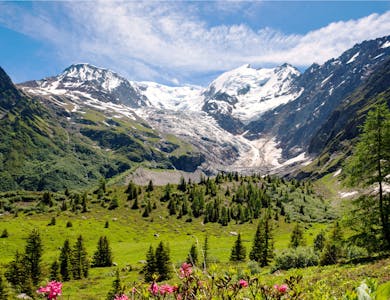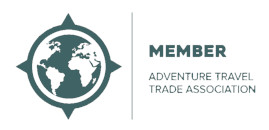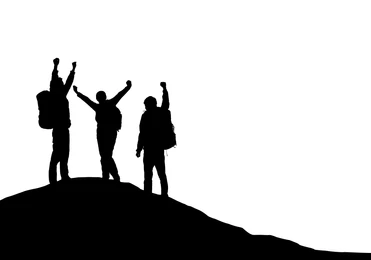Tour du Mont Blanc
Everything You Need to Know Before You Trek

A comprehensive guide to Europe’s most iconic long-distance hike – routes, gear, accommodation and essential tips
The Tour du Mont Blanc (TMB) is one of the world’s most spectacular trekking routes, circling the towering Mont Blanc massif through France, Italy, and Switzerland. Covering around 170 km (106 miles) with over 10,000 metres of elevation gain, this multi-day trail is a rite of passage for hikers seeking an unforgettable alpine adventure.
If you're planning to lace up your boots and take it on, here’s a comprehensive guide that answers the most commonly asked questions about the Tour du Mont Blanc.
🥾 What is the Tour du Mont Blanc?
The Tour du Mont Blanc is a loop trek around Mont Blanc, the highest peak in Western Europe at 4,808 metres. The trail passes through picturesque valleys, snow-capped passes, charming alpine villages, and three countries: France, Italy, and Switzerland.
You can start and finish the circuit in various locations—most commonly Les Houches in the Chamonix Valley or Courmayeur in Italy.
⏱️ How long does it take?
The full circuit typically takes 10 to 12 days to complete, depending on your pace, route choice, and rest days. Some experienced hikers complete it in 7–9 days, while others prefer to slow down and enjoy the journey over two weeks.
There are also options for shorter sections or guided highlights tours, making it accessible even if you’re short on time.
🗺️ What route options are there?
The TMB is well waymarked and can be hiked:
Clockwise or anticlockwise (the latter is more common)
Self-guided or with a guided group
In refuge-to-refuge style, camping, or luggage transfer format
There are also alternate variants—some offer more scenic or challenging routes, like the Col des Fours or the Fenêtre d’Arpette, while others offer shortcuts using public transport or ski lifts.
📅 When is the best time to hike the TMB?
The main season is from mid-June to mid-September. Here’s how the months break down:
June: Fewer crowds but some high passes may still have snow. Crampons/microspikes could be necessary.
July–August: Peak season with the best weather, all facilities open, and longest daylight hours. Also the busiest.
September: Quieter trails and beautiful autumn colours, but cooler temperatures and shorter days.
Note: The trail is not accessible in winter without specialised equipment and experience due to snow conditions.
🏕️ Where do you stay?
Accommodation on the TMB ranges from:
Mountain refuges (refuges or rifugi) – Dormitory-style with meals included.
Auberges and small hotels – Found in villages along the route.
Campsites – Legal in designated areas, more common on the French side.
Private rooms or B&Bs – May be limited and must be booked early.
During peak season, book well in advance, especially for popular huts like Refuge du Col de la Croix du Bonhomme or Rifugio Bonatti.
🧳 Do I have to carry all my gear?
Not necessarily! Many travellers opt for luggage transfer services, which transport your bags from one accommodation to the next each day—leaving you with just a daypack. This is especially popular on self-guided tours.
If you're wild camping or taking on the trek independently without transfers, you'll need to carry full gear including sleeping bag, stove, and possibly food for remote sections.
🧭 Do I need a guide?
The trail is well marked with red-and-white or yellow signs, and maps and GPS apps are widely available. If you're comfortable with navigation and hiking in mountainous terrain, a self-guided trip is very achievable.
However, a guided tour is ideal if:
You’re short on planning time
You want to meet like-minded hikers
You’d prefer someone else to handle logistics
You’d like extra safety support
⛰️ How difficult is the Tour du Mont Blanc?
The TMB is classified as moderate to strenuous. While you don’t need to be a mountaineer, you do need:
Good physical fitness
Comfort hiking 6–8 hours a day
Ability to handle 800–1,200 metres of elevation gain per day
Confidence on rocky paths and uneven terrain
Training with hilly hikes and endurance walks in the months leading up will make a huge difference to your comfort and enjoyment.
🧰 What gear do I need?
Essentials include:
Quality hiking boots (broken in)
Waterproof jacket and trousers
Backpack (25–40L) if self-carrying
Hiking poles
Layered clothing (temperatures vary by elevation)
Sunglasses and sun protection
First aid kit
Snacks and hydration system
If you’re staying in refuges, don’t forget a sleeping bag liner (blankets are usually provided), ear plugs, and cash in euros and Swiss francs.
🛂 Do I need a visa?
If you're a UK passport holder, you can travel visa-free in the Schengen Area (France, Italy, Switzerland) for up to 90 days in any 180-day period. Make sure your passport is valid for at least 3 months after your intended return.
Travel insurance that includes hiking at altitude (above 2,000m) is highly recommended.
🌍 Is the Tour du Mont Blanc worth it?
Absolutely. Few hikes in the world combine epic scenery, cultural variety, and accessible infrastructure quite like the Tour du Mont Blanc. Whether you’re a solo adventurer or joining a group, each day brings new landscapes—from glaciers and wildflower meadows to alpine villages and cowbell-strewn valleys.
It’s challenging but deeply rewarding, and you’ll finish with not just memories, but a deep sense of achievement and connection to the mountains.
🧩 Final Thoughts
The Tour du Mont Blanc is much more than a hike—it's a journey through some of Europe’s most awe-inspiring landscapes, cultures, and communities. With good preparation and realistic expectations, it’s a trip that hikers of all ages will treasure for a lifetime.
Start planning early, secure your accommodation, get some practice hikes in—and you’ll be ready for the trail of a lifetime.




